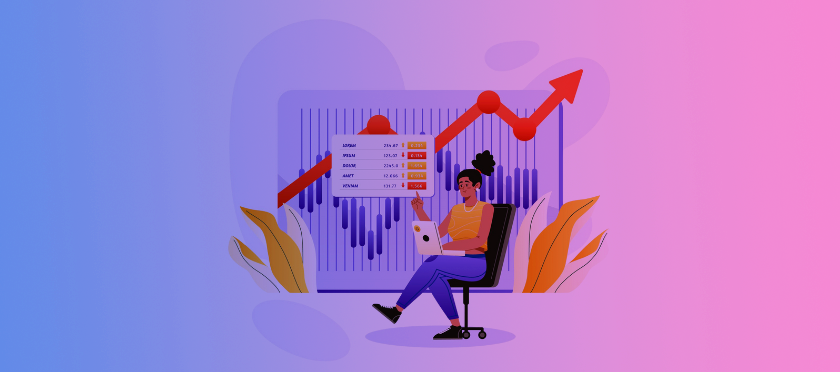Best Risk Management Tools For Forex Trading
Forex trading involves various types of risks, including transaction risk, economic risk. To mitigate these risks, traders can use several risk management tools, including stop loss and target levels, risk-reward ratio, position size, risk per trade, trading rules, leverage and margin. Traders should also understand the different types of trading risks, such as market risk, credit risk, and operational risk, and develop a risk management strategy accordingly. One way to mitigate foreign exchange risk is to use hedging techniques such as currency forwards or futures. Another way is to use matching or natural hedging techniques, which involve paying liabilities with receipts denominated in the same currency.
When it comes to forex trading, risk management is crucial to ensure long-term success. In this blog, we will discuss the best risk management tools for forex trading.
Stop Loss and Target Levels
One of the best strategies for risk management in forex trading is the stop loss order. If you are incorrect about the direction of the market, this is the price at which your order expires. When a trade goes bad, a stop loss order can help you limit your losses. Similarly, target levels can help you lock in profits. A target level is the price at which you want to exit a trade to take profits. By setting stop loss and target levels, traders can manage their risk and protect their capital.
Risk-Reward Ratio
Risk to reward ratio compares your stop loss level and your target profit level for your trades. It is a measure of the potential reward for every dollar risked. A good risk-reward ratio is typically 2:1 or higher. This means that for every dollar risked, you have the potential to make two dollars in profit. By using a good risk-reward ratio, traders can ensure that their potential profits outweigh their potential losses.
Position Size
Position size refers to the number of units of a currency pair that you trade. It is important to determine the appropriate position size for each trade based on your risk tolerance and account size. A general rule of thumb is to risk no more than 1-2% of your account balance on any single trade. By using appropriate position sizing, traders can manage their risk and avoid overexposure to the market.
Evaluate Your Account: Are you ready to assess your trading skills and potentially get funded? Funded Traders Global offers a unique evaluation process. Click [here] to evaluate your account and take the first step toward becoming a funded trader.
Risk per Trade
Risk per trade refers to the amount of money that you are willing to risk on each trade. It is important to determine the appropriate risk per trade based on your risk tolerance and account size. A general rule of thumb is to risk no more than 1-2% of your account balance on any single trade. By using appropriate risk per trade, traders can manage their risk and avoid overexposure to the market.
Trading Rules
Trading rules refer to a set of guidelines that traders follow to manage their risk. These rules can include entry and exit criteria, stop loss and target levels, and position sizing. By following a set of trading rules, traders can manage their risk and avoid making emotional decisions.
Leverage and Margin
Leverage and margin refer to the amount of money that you can borrow from your broker to trade. Leverage can raise your possible earnings, but it can also raise your possible losses. It is important to use leverage and margin wisely and to understand the risks involved. By using appropriate leverage and margin, traders can manage their risk and avoid overexposure to the market.
Types of Trading Risks
Traders should also understand the different types of trading risks, such as market risk, credit risk, and operational risk, and develop a risk management strategy accordingly. Market risk is the possibility of suffering losses as a result of shifting market dynamics. Credit risk refers to the risk of losses due to the failure of a counterparty to fulfill its obligations. Operational risk refers to the risk of losses due to inadequate or failed internal processes, people, and systems.
Join Our Discord Community: Connect with fellow traders, share insights, and stay updated on market trends. Join Funded Traders Global’s Discord community [here] to engage in discussions, get real-time updates, and enhance your trading journey.
Hedging Techniques
One way to mitigate foreign exchange risk is to use hedging techniques such as currency forwards or futures. A currency forward is a contract that allows you to buy or sell a currency at a predetermined exchange rate at a future date. A currency future is a standardized contract that allows you to buy or sell a currency at a predetermined exchange rate at a future date. By using hedging techniques, traders can manage their risk and protect their capital.
Best Risk Management Tools for Forex Trading with Funded Traders Global
As a leading forex trading company, Funded Traders Global places a strong emphasis on empowering traders with the best risk management tools. Their platform integrates cutting-edge technology to provide a seamless trading experience with a focus on minimizing risks.
If you are interested in forex trading and want to evaluate your account to get funded, sign up for evaluation at Funded Traders Global. Join our Discord to stay up-to-date with the latest news and trends in forex trading. Remember, risk management is crucial to ensure long-term success in forex trading. By using the best risk management tools and developing a risk management strategy, you can manage your risk and protect your capital.


